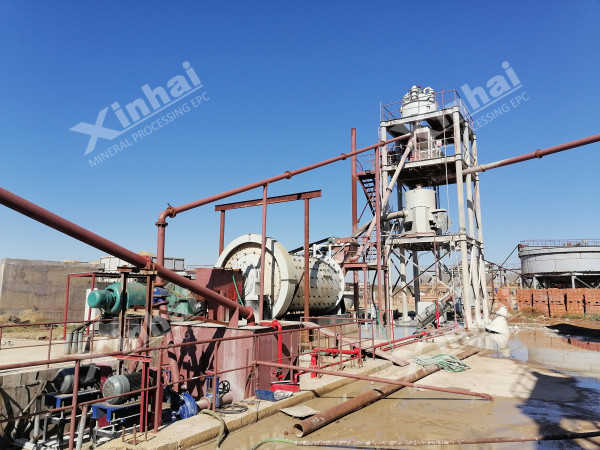There is no unified method and standard for the classification of gold ore types. Now, according to the complexity of ore composition and the difficulty of beneficiation, it is roughly divided into the following categories.

The material composition of this kind of ore is relatively simple, mostly of quartz vein type or hydrothermal alteration type. Pyrite is the main sulfide, but the content is small. Occasionally, copper, lead, zinc, tungsten, molybdenum and other minerals are associated. The gold ore is mainly natural gold, and other minerals have no recovery value. It can be treated by simple beneficiation process, coarse-grained gold can be recovered by gravity separation method and mercury mixing method, fine-grained gold is generally recovered by flotation method, flotation concentrate is re cyanidated, and very fine lean ore is generally recovered by all slime cyanidation method.

This kind of ore contains a lot of pyrite and arsenopyrite, and the gold grade is low. The natural gold particles are relatively small and are mostly wrapped in pyrite and arsenopyrite. It is generally easy to separate gold and sulfide from this type of ore, while the separation of gold from pyrite and arsenopyrite requires a more complex separation and smelting process.
This type of ore is characterized by high sulfide content. In addition to gold, the ore also contains copper, lead, zinc, silver, tungsten, antimony and other metal minerals. The latter often has independent mining value. In addition to the close relationship with pyrite, natural gold is also closely associated with copper, lead and other minerals. The particle size of gold varies widely, and its distribution in the ore is extremely uneven. There are many kinds of metal minerals that need to be comprehensively recovered. Therefore, the treatment of this kind of ore needs to adopt a more complex beneficiation process. This type of ore generally changes with the extension of mining depth, and the mineral processing process must be adjusted accordingly.

The difference between this type of ore and the third type of ore is that the grade of gold is low, but it is the main comprehensive recovery element. The particle size of gold ore is medium, and the symbiotic relationship with copper minerals is complex. Most of the gold is produced with copper concentrate during beneficiation, and gold is separated during smelting.
Gold bearing minerals are still dominated by natural gold, but a considerable part of gold is hosted in gold tellurides. Most of these ores are low-temperature hydrothermal deposits, and the gangue minerals are mainly quartz, chalcedony quartz and carbonate minerals. Because gold telluride is very brittle, it is easy to slime in the grinding process, which brings difficulties to the flotation of gold telluride minerals. Therefore, it is necessary to select the process flow of stage grinding and stage flotation when processing gold telluride bearing ores.

The main metal mineral is limonite, which contains no or little sulfide, but contains stable secondary minerals such as gold containing iron hydroxide or iron containing oxide and some quartz, which are the main characteristics of the mineral composition of this type of ore. Most of the gold occurs in the main gangue and weathered metal oxide fractures. The gold particle size changes greatly and the mineral composition is relatively simple. The separation methods are mainly gravity separation and cyanidation.